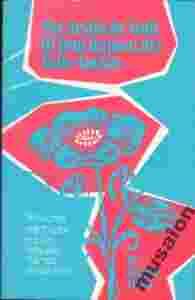|
Gerard Flynn
The Aesthetic Code of Don Ramón del Valle-Inclan
University Editions 1994
Stron 235, format: 14x21 cm
Książka jest nowa
TABLE OF CONTENTS
Prologue5
Proem I: The Gnostic and the Garbancero 1
Proem II: The Code of Don Ramon del Valle-Inclan9
Proem III: Thoughts Concerning the Literary Code of11
Don Ramon Del Valle-Inclan
Canto I: Pensees13
Canto II: La Lampara Maravillosa 31
Canto III: Stellar Vision 49
Canto IV: The Shadows in Plato's Cave, or,59
Comte Revisited
Canto V: The Sonata de Primavera:84
Deciphering Valle-Inclan
Canto VI: La Guerra Carlista135
Canto VII: El Resplandor de la Hoguera148
Canto VIII: A Prosaic Effort to Explain the Code172
Appendix I: Some Ideas for Future Students. Unamuno.178
Appendix II: Azorin 185
Appendix HI: A Millenarian Tale: The Hymn of Pipa Kif186
Appendix IV: Opinion188
Appendix V: Thoughts I'd Rather Not Leave in the Inkwell 191
Appendix VI: Octavio Paz: Las Trampas de la Critica194
End Notes205
Bibliography I221
Bibliography II222
Index
In 1960 Gerard Flynn began a series of articles on Ramon del Valle-Inclan, which he published in HISPANIC REVIEW. All of these articles pointed to the aesthetic gnosis of this strange bard from Galicia.
Professor Flynn places Valle-Inclan in first place among modern Spanish authors because his ''sidereal vision," his nearing the phenomenal-noumenal wall, his choreographic words (RAFAGAS, MANOS PALIDAS, CREPUSCULOS, TREMULOS), in a word, his gnosis, will lead to an understanding of Unamuno's INTRAHISTORIA, Azorin's LEJANIA IDEAL, and Salinas's GRACIA. It will even lead to an understanding of the opposite category, the irascible negation of metaphysics by the bad man from Itzea, Pio Baroja.
THE AESTHETIC CODE OF VALLE-INCLAN quotes an ancient saying: "This is the night when the veil between the two worlds thins," which is predicated of Halloween in Irish Celtic mythology. Thus Flynn speaks of "the Halloween art of Valle-Inclan," an art including both his SONATAS and ESPERPENTOS (grotesques resembling gargoyles).
The present book studies the choreography of Valle-Inclan, who in his LAMPARA MARAVILLOSA wrote that "Dance is the highest aesthetic expression, because it alone will bring to the eyes musical numbers and caesuras." To support Valle's statement Flynn quotes from Juan Maragall's ELOGIOS: DE LA DANZA. Maragall's words will account for Valle's pantheistic LOGOS ESPERMATICO.
Unlike many modern figures, Valle-Inclan was not a nominalist. He held to certain universal truths, and his way of achieving them, his CAMINO DE PERFECCION, was the musical miracle of art.
THE AESTHETIC CODE draws on the works of many authors: Pascal, Kant, Novalis, the KRAUSISTAS, Villiers de L'Isle-Adam, Dario, F.C. Happold (on mysticism) ....
|

